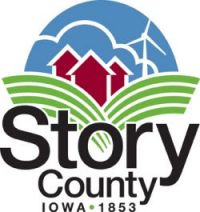Image

Yet Don Kom, director of the City of Ames Electric Department, tells us: “There has been no discussion at my level of bringing fiber from the city to our customers. We’re not having that discussion.” Certainly the city has many pressing issues and priorities to address, but super-fast Internet service ought to be high on its list. Besides the fact that it’s the wave of the future and we ought to try to keep pace with that wave, Ames has an impressive history of ambitious and innovative achievements. From burning trash for power to building a large man-made lake, from CyRide to the Main Street revival, Ames is a leader, not a follower, in tackling big things.Ames provides a reminder that while municipal electric utilities have been at the forefront of investing in FTTH networks historically and gigabit networks more recently, many municipal electric utilities are spending a lot of energy trying to avoid stepping outside their historic business models. I'm reminded of an interview with Harold DePriest, the visionary CEO of Chattanooga's Electric Power Board, who runs the first network in the US capable of delivering a gig anywhere in the city at a moment's notice (see our case study, Broadband at the Speed of Light).
 I asked Harold about the role of a municipal electric utility and he said the municipal utilities were formed to ensure the community could take full advantage of the new technology of the day because the private sector was not investing in a way to allow everyone to benefit. It was not about electricity, it was about doing what needed to be done for a community to have the infrastructure it needs to thrive.
That said, either Ames or Story County could move forward with a project absent assistance from the utility. Seattle found its electric utility quite reluctant as well and has settled with a public-private partnership. Other local governments have moved forward with no electric utility - it is a harder path, but by no means impossible.
At the risk of copying too much from the Ames editorial, I do want to highlight how they finished it. Very well written:
I asked Harold about the role of a municipal electric utility and he said the municipal utilities were formed to ensure the community could take full advantage of the new technology of the day because the private sector was not investing in a way to allow everyone to benefit. It was not about electricity, it was about doing what needed to be done for a community to have the infrastructure it needs to thrive.
That said, either Ames or Story County could move forward with a project absent assistance from the utility. Seattle found its electric utility quite reluctant as well and has settled with a public-private partnership. Other local governments have moved forward with no electric utility - it is a harder path, but by no means impossible.
At the risk of copying too much from the Ames editorial, I do want to highlight how they finished it. Very well written:
And, to take this a step further, while Ames should be taking steps to become a gigabit city, Story County should be looking for ways to extend broadband service to everybody in the county. It’s disturbing, frankly, to imagine that some rural residents are still coping with the sluggish Internet speeds of the 1990s. It’s pretty clear now that the Internet is not just a fad. It’s equally evident that most of America’s future economy will involve the Internet in some way. Let’s get started now on making Ames a gigabit community on a par with anybody else in the country. It’s not overly dramatic to argue that our economic future depends on it.
